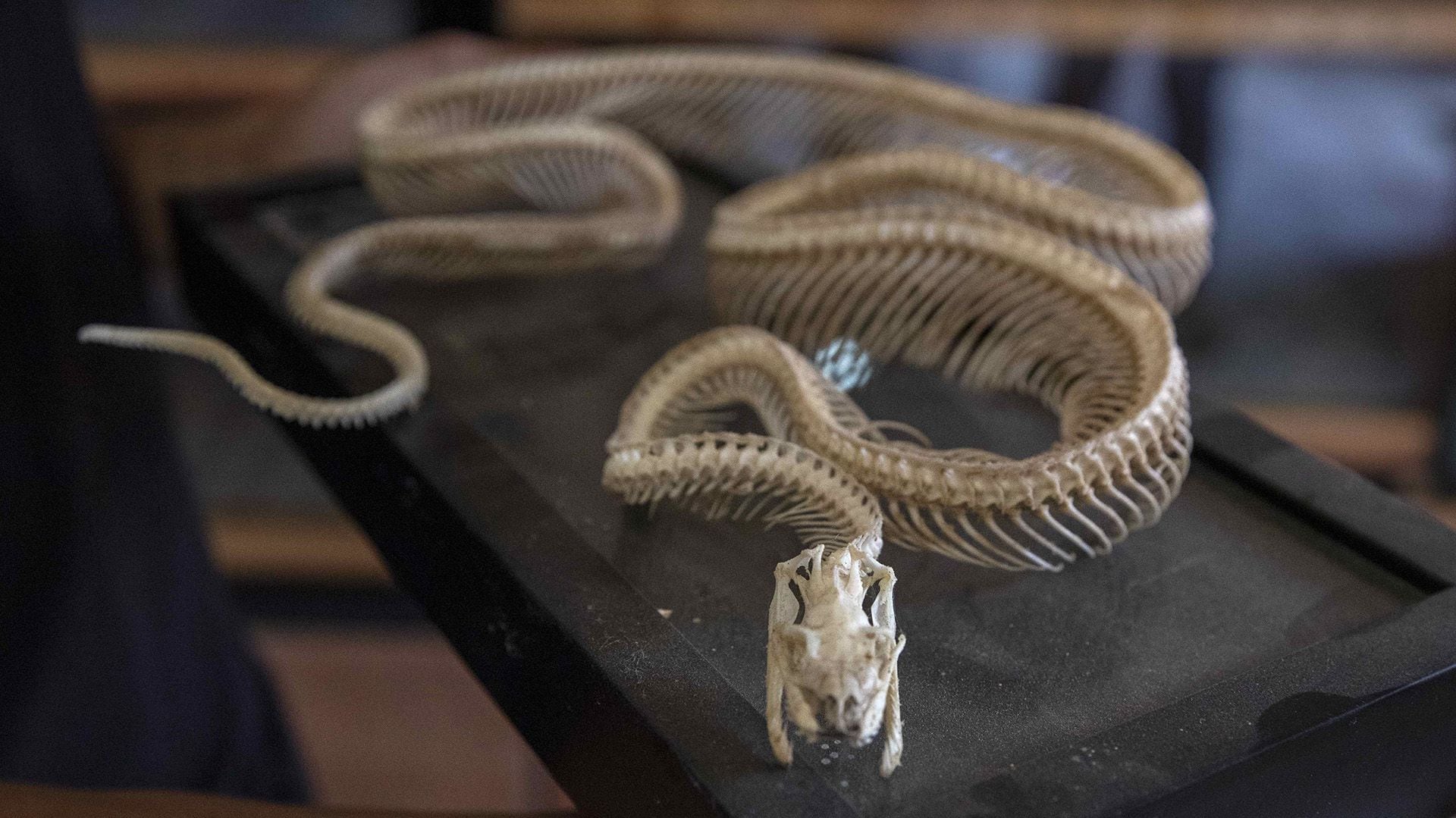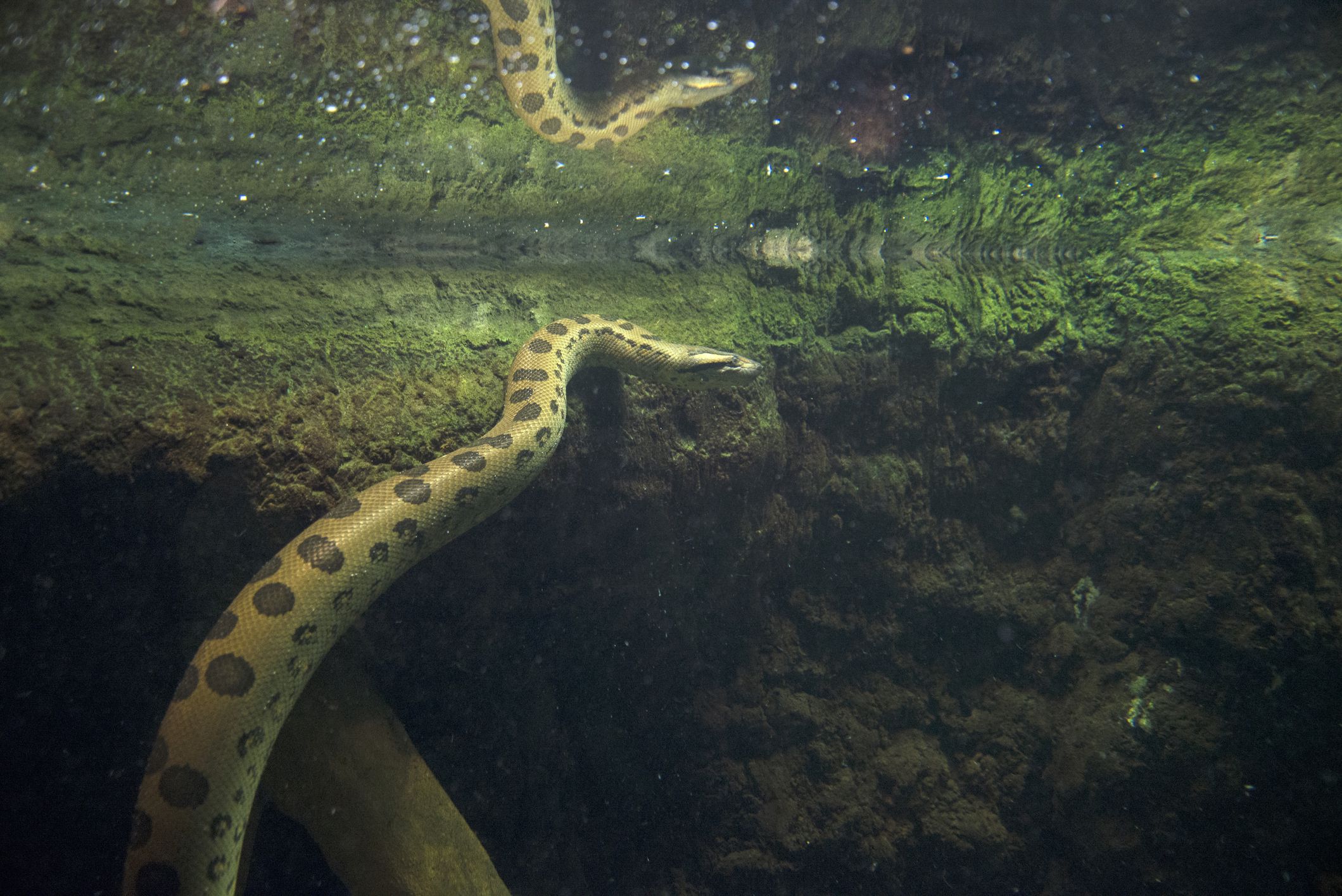
Boa constrictors are famous for hunting by ambushing their prey and then squeezing animals caught to death with their muscle coils. But since a boa constricts its body around a victim and cuts off blood flow to that animal's brain, how does the snake avoid squeezing all the air from its own lungs and suffocating in the process?
It turns out that a boa constrictor can quickly adjust which section of your rib cage you use to breathe, according to a study in the Journal of Experimental Biology (JEB). So if a boa catches a squirrel or rat using the front half of its body, the constriction will use the ribs below its noodle-like body to continue breathing while crushing the rodent. And likewise, the ribs closest to the animal's head will take over if the hind ribs are currently pressed against an immobilized animal.
“Constriction is an incredibly energy-draining behavior and almost certainly requires a high demand for oxygen,” David Penning, an assistant professor of biology at Southern Missouri State University, who did not participate in the study. The new research “helps to clear up some of the confusion about how oxygen intake occurs during this arduous process.”
In addition to revealing how boas breathe during constriction, “I think this work can be used to make broader inferences beyond the boa constrictor,” Penning told WordssideKick.com in an email. “Not only do we know very little about how snakes work, we also know little about the actual metabolic demands of most of their activities.”
Evolution of the snake lung

“This ability to control which section of your rib cage is involved in breathing likely allowed boas to evolve into their current forms,” said the study's first author, John Capano, a postdoctoral associate researcher at the Department of Ecology, Evolution and Organism Biology at the University of Brown's Info. “You don't seem to be able to develop a constriction to kill really big things if you're compromising lung ventilation,” Capano said.
This precise breathing strategy is also likely to help boas survive the process of swallowing and digesting large prey, as these strong foods restrict the movement of the animal's ribs from the inside, the specialist told WordssideKick.com. In their report, the authors of the study theorize that other species of snakes are likely to use this same breathing method, and that the method probably evolved along with the highly mobile skulls of snakes, which contract so that animals can wrap their jaws around huge prey and swallow them.
Unlike humans, snakes lack diaphragms, the large dome-shaped muscles that contract and flatten to allow a person's lungs to expand and fill with air and then relax and compress the lungs to expel air. Instead, snakes use muscles attached to their ribs to alter the volume of their rib cage and allow air to enter and exit the lungs.
When animals breathe with their rib cage, they usually use small muscles called intercostals that run between adjacent ribs, according to Capano. These animals use the intercostal muscles to move entire “blocks” of ribs at once, rather than having independent, fine-tuned control of individual ribs.
In comparison, boas and other snakes primarily use the shoreline lift muscles to breathe; each coast levator extends from the spine to one of the snake's 400+ ribs. In their new study, the team revealed how each levator costa “can basically control movements much more discreetly.” “You can just lift that individual rib,” they said. When a levator costa contracts, it pulls the rib back, like a door on a hinge, while causing the bone to rotate slightly; these delicate movements control when and where the snakes' lungs can be inflated.

All snakes have fully developed right lungs, but depending on the species, a snake may have a negligible left lung or no left lung, according to a 2015 report in PLOS One magazine . Constrictor boas belong to the first group, as they have a tiny left lung and a long right lung that is about one-third the length of the snake's body, the JEB report notes.
The front third of the long lung, the one closest to the snake's head, contains tissue that can perform gas exchange, meaning it can pass oxygen into the bloodstream and remove or exhale waste products, such as carbon dioxide. The back two-thirds of the lung cannot perform gas exchange and are essentially “just a bag,” Capano said.
Scientists have different theories about the function of this bag-like region, but the new study supports the idea that it acts as a kind of bellows that helps draw air through the front of the lung that exchanges gases, according to the expert. So, when the front of the lung cannot fully expand, when the boa is busy eating a snack, the back of the lung can still draw air through the tissue and allow gas exchange to occur. “Even if your front lung can't move, or even if something crushes it, you can still suck air through it. And then, by doing so, you're still drawing oxygenated air through your vascular tissue,” he added.

The team discovered that constrictor boas used this unique breathing method by placing blood pressure cuffs on adult boas in their laboratory, to restrict the movement of some of the snakes' ribs. The team used several techniques to measure the airflow in and out of the snakes' lungs and the electrical activity of different muscles. They also used a technique called “X-ray reconstruction of morphology in motion” (XROMM) to track how snakes' ribs moved, in real time.
The use of XROMM involved placing small metal markers on some of the snakes' ribs and then scanning the animals from the side and from above as they moved. By combining the images taken from both points of view, the team captured how the ribs moved in three dimensions and created detailed models of the moving rib cage.
“The new study captures very well how the movement of the boas ribs changes in response to the blood pressure cuff, which presses the animal from all sides,” Penning said. That said, when a snake actually constricts an animal, the side of the snake that makes contact with the prey “probably does most of the work by exerting force”, while the other side of the snake may be less compressed, in comparison, the expert noted. Looking ahead, Capano said he is interested in studying how boas and other snakes move their ribs during different dynamic behaviors, such as sliding.
KEEP READING:
They discover two new species of crystal frogs: this is how the heart of these amphibians beats
Últimas Noticias
Debanhi Escobar: they secured the motel where she was found lifeless in a cistern
Members of the Specialized Prosecutor's Office in Nuevo León secured the Nueva Castilla Motel as part of the investigations into the case

The oldest person in the world died at the age of 119
Kane Tanaka lived in Japan. She was born six months earlier than George Orwell, the same year that the Wright brothers first flew, and Marie Curie became the first woman to win a Nobel Prize

Macabre find in CDMX: they left a body bagged and tied in a taxi
The body was left in the back seats of the car. It was covered with black bags and tied with industrial tape
The eagles of America will face Manchester City in a duel of legends. Here are the details
The top Mexican football champion will play a match with Pep Guardiola's squad in the Lone Star Cup

Why is it good to bring dogs out to know the world when they are puppies
A so-called protection against the spread of diseases threatens the integral development of dogs




